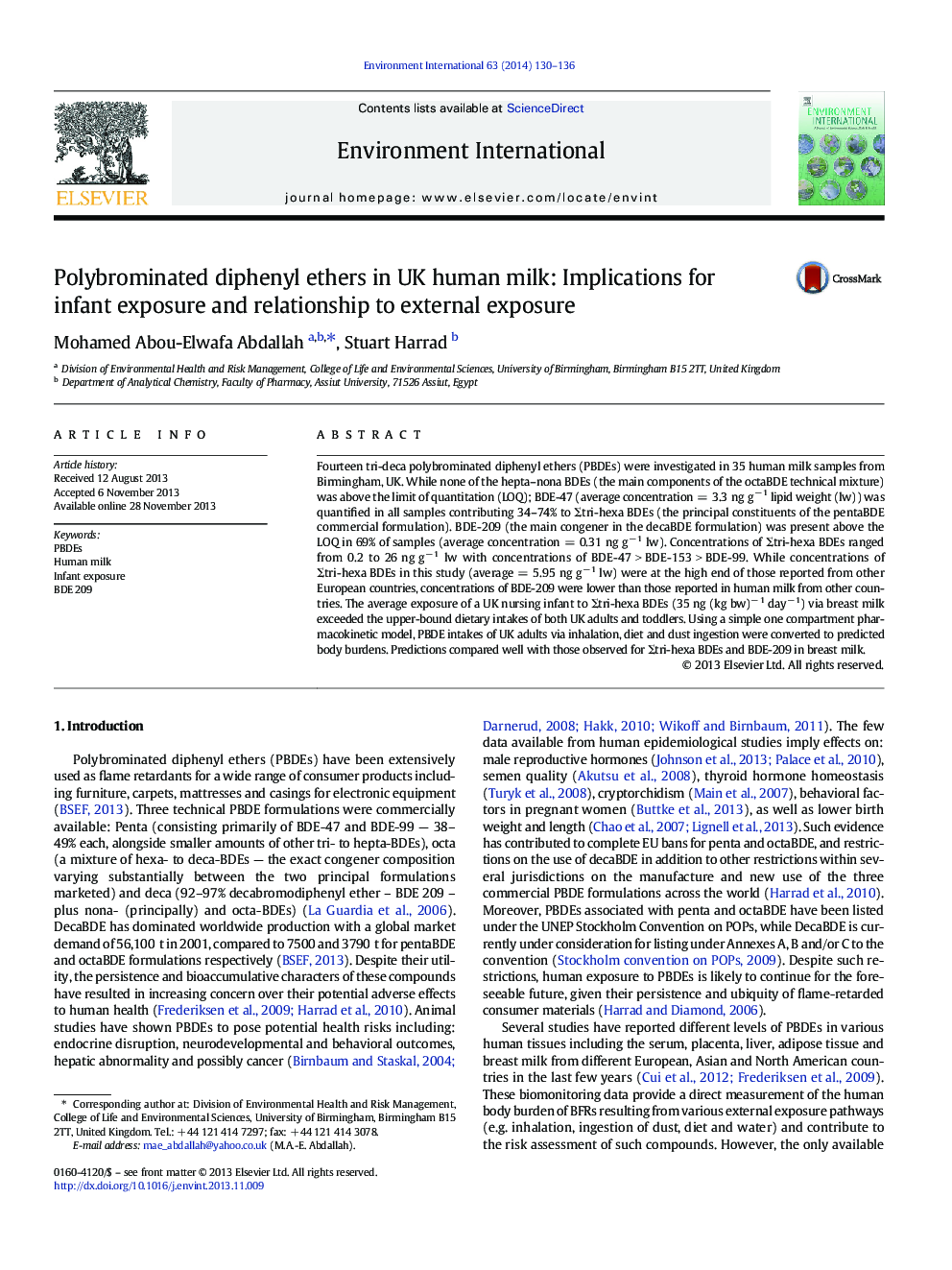| کد مقاله | کد نشریه | سال انتشار | مقاله انگلیسی | نسخه تمام متن |
|---|---|---|---|---|
| 6314070 | 1619065 | 2014 | 7 صفحه PDF | دانلود رایگان |
عنوان انگلیسی مقاله ISI
Polybrominated diphenyl ethers in UK human milk: Implications for infant exposure and relationship to external exposure
ترجمه فارسی عنوان
الیاف دیفنیل پلیبرومونید شده در شیر مادر بریتانیا: پیامدهایی برای قرار گرفتن در معرض نوزاد و ارتباط با قرار گرفتن در معرض قرار گرفتن در معرض خارجی
دانلود مقاله + سفارش ترجمه
دانلود مقاله ISI انگلیسی
رایگان برای ایرانیان
موضوعات مرتبط
علوم زیستی و بیوفناوری
علوم محیط زیست
شیمی زیست محیطی
چکیده انگلیسی
Fourteen tri-deca polybrominated diphenyl ethers (PBDEs) were investigated in 35 human milk samples from Birmingham, UK. While none of the hepta-nona BDEs (the main components of the octaBDE technical mixture) was above the limit of quantitation (LOQ); BDE-47 (average concentration = 3.3 ng gâ 1 lipid weight (lw)) was quantified in all samples contributing 34-74% to Σtri-hexa BDEs (the principal constituents of the pentaBDE commercial formulation). BDE-209 (the main congener in the decaBDE formulation) was present above the LOQ in 69% of samples (average concentration = 0.31 ng gâ 1 lw). Concentrations of Σtri-hexa BDEs ranged from 0.2 to 26 ng gâ 1 lw with concentrations of BDE-47 > BDE-153 > BDE-99. While concentrations of Σtri-hexa BDEs in this study (average = 5.95 ng gâ 1 lw) were at the high end of those reported from other European countries, concentrations of BDE-209 were lower than those reported in human milk from other countries. The average exposure of a UK nursing infant to Σtri-hexa BDEs (35 ng (kg bw)â 1 dayâ 1) via breast milk exceeded the upper-bound dietary intakes of both UK adults and toddlers. Using a simple one compartment pharmacokinetic model, PBDE intakes of UK adults via inhalation, diet and dust ingestion were converted to predicted body burdens. Predictions compared well with those observed for Σtri-hexa BDEs and BDE-209 in breast milk.
ناشر
Database: Elsevier - ScienceDirect (ساینس دایرکت)
Journal: Environment International - Volume 63, February 2014, Pages 130-136
Journal: Environment International - Volume 63, February 2014, Pages 130-136
نویسندگان
Mohamed Abou-Elwafa Abdallah, Stuart Harrad,
